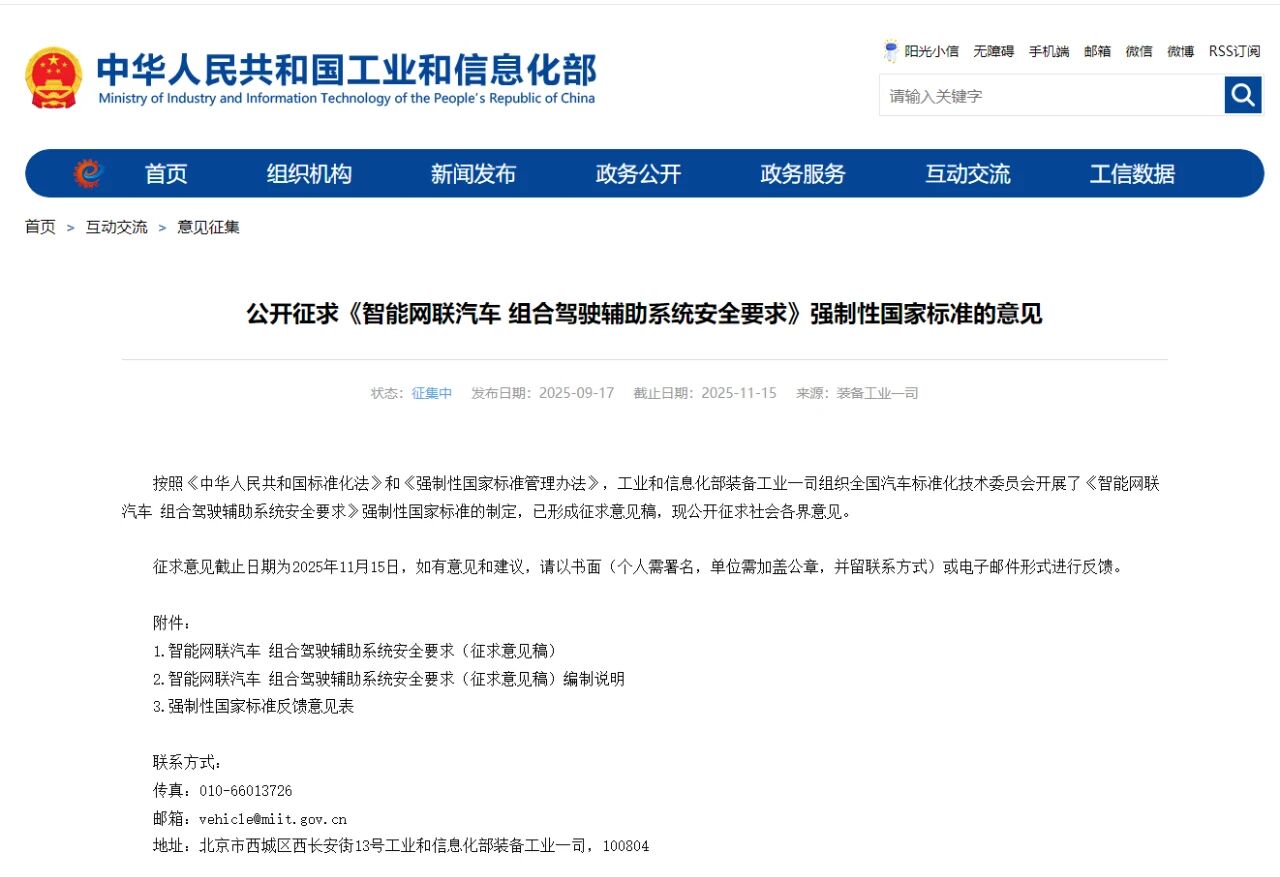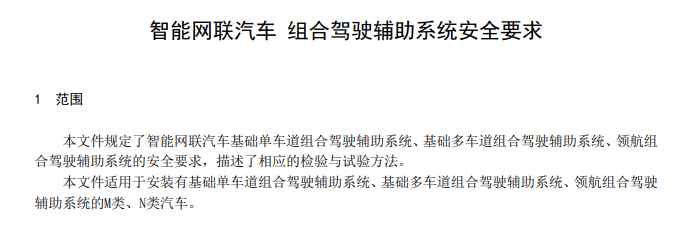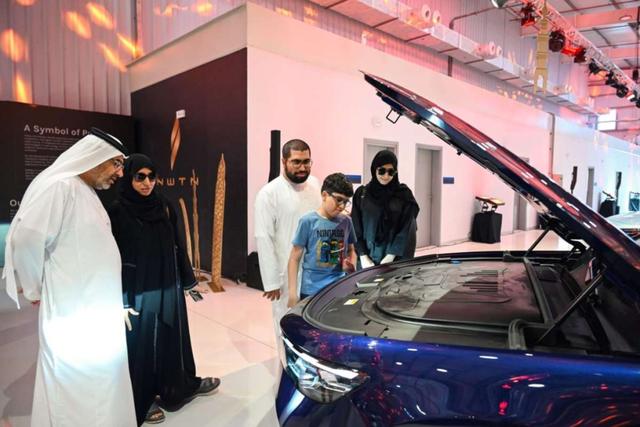Comprehensive upgrade! Li Car Series Upgrade ...
2024-03-15

Company and industry dynamics
 2025-09-18
2025-09-18 On September 17th, the website of the Ministry of Industry and Information Technology officially solicited opinions on the mandatory national standard for "Safety Requirements for Intelligent Connected Vehicle Combined Driving Assistance Systems". The deadline for soliciting opinions is November 15, 2025.
This standard is in line with international standards such as UN R171 "Uniform Regulations for the Approval of Driver Control Assistance Systems (DCAS) for Vehicles", and is closely integrated with China's complex road traffic scenarios. It fully considers different product forms and technical routes, and divides combined driving assistance systems into four categories: basic single lane, basic multi lane, navigation combination, and parking combination driving assistance systems. Among them, parking combination driving assistance systems are not included in this standard.
On the basis of three types of combined driving assistance systems: basic single lane, basic multi lane, and navigation assistance, the standard constructs a safety assurance system from three dimensions: "improving product capability performance", "strengthening safety assurance requirements", and "standardizing system usage", clarifying the core requirements for the safe operation of the combined driving assistance system.
01 Triple defense line strengthens the safety of assisted driving
At the functional performance level, the standard strictly limits the "design operating conditions" of the system, specifying that the system can only be activated in scenarios that meet the conditions. Based on the different functional characteristics of single lane, multi lane, and navigation assistance, technical requirements such as human-computer interaction, functional safety, expected functional safety, information safety, and data recording are set up, and a multi-level verification system combining "site testing+road testing+document inspection" is established. Among them, the navigation assistance system is specifically required to have speed limit control assistance capability, not to change lanes at solid lines, and must pass tests in complex scenarios including road intersections, construction areas, etc. to verify the actual operational capability of the system.
In terms of full lifecycle management, standards run through the entire process of system development, manufacturing, and use, striving to build a complete safety chain that covers pre -, during -, and post processes. Strengthen security risk design during the R&D phase and proactively identify potential hazards; The production and manufacturing process should ensure the robustness of the production process, while achieving full traceability of the product chain; During the operation phase, it is required to dynamically monitor the vehicle status, achieve the ability to monitor and report, and comprehensively improve and ensure system safety.
In response to the issues of driver misuse and abuse, the standard also provides clear guidelines for the use of the system. According to the relevant requirements of the Classification of Automotive Driving Automation, it is emphasized that the combined driving assistance system is not an auto drive system, and the driver needs to keep an eye on the road conditions and control the vehicle. Specifically, the standard requires that the system must first confirm that the driver has completed usage training before activation after each power on/ignition; During the activation period, the standard requires the system to have the ability to detect hand and eye detachment. Once abnormalities are detected, prompt and alarm should be immediately issued. If the driver does not respond in a timely manner, the system should be able to exit the activation state in a controllable manner; If the risk mitigation function of the system is activated due to the driver's disengagement from control, or if the driver repeatedly loses control of their hands or vision, the system should be prohibited from being used again for a certain period of time.
02 There are four major differences from international standards
It is reported that compared to the UN R171 "Uniform Regulations on the Approval of Driver Control Assistance Systems (DCAS) for Vehicles", China's standards fully consider the actual local road traffic environment and the actual safety needs of the system, presenting four major differences.
Specifically, the standard explicitly prohibits the system from suppressing the prompt function of "holding the steering wheel", and requires that dynamic driving tasks can only be executed when the driver has not left the task, further strengthening the driver's main responsibility;
We have refined the methods of road testing, such as test duration and road element requirements, and combined them with domestic traffic accident statistical data to add test scenarios such as construction areas, cardboard boxes, pedal type two wheeled motorcycles, and side overturning. At the same time, we require the system to conduct tests at the maximum allowable speed declared by the car manufacturer to ensure that the test scenarios match actual travel needs;
Covering user notifications and driver training requirements to various types of systems such as basic single lane, basic multi lane, and navigation assistance, rather than just targeting the system triggered lane change control function, effectively avoiding driver "misuse" and "abuse";
In addition, new requirements have been added for vehicle side data recording, clarifying the content, elements, storage methods, and reading standards of data recording, providing accurate data support for the investigation and analysis of traffic accidents, which is more in line with the actual needs of domestic traffic management.
03 Fill the gap and ensure public travel safety
With the increasing popularity of combined driving assistance systems, industry level issues have gradually become prominent, coupled with the continuous governance of regulatory authorities, which has driven the release of the mandatory national standard draft for soliciting opinions.
According to relevant data, the adoption rate of L2 level combined driving assistance technology for new energy vehicles exceeds 50%, and it is expected that the assembly rate will continue to increase. The gradual increase in the penetration rate of combined driving assistance systems has not only improved the driving experience, but also caused a series of traffic accidents due to insufficient system capabilities and incorrect use of the system by drivers, which has attracted widespread attention from all sectors of society.
In this context, establishing unified safety bottom line standards and clarifying propaganda red lines has become a common demand of regulatory authorities, industry enterprises, and the general public. Since the beginning of this year, regulatory authorities have carried out intensive governance to address these issues.
In February, the Ministry of Industry and Information Technology and the State Administration for Market Regulation jointly issued a notice on further strengthening the management of access, recall, and software online upgrade of intelligent connected vehicle products, which clearly requires car companies to strengthen the testing and verification of combined driving assistance products, standardize marketing and publicity behavior, and strictly fulfill their obligation to inform users.
In April, the Equipment Industry Department of the Ministry of Industry and Information Technology organized a promotion meeting for the admission and online software upgrade management of intelligent connected vehicle products, requiring production enterprises to fully carry out combined driving assistance testing and verification, clarify system functional boundaries and safety response measures, not exaggerate or falsely promote, strictly fulfill the obligation of notification, and effectively assume the main responsibility for production consistency and quality safety; In the same month, the China Association of Automobile Manufacturers and the China Society of Automotive Engineers jointly issued an initiative calling on enterprises to eliminate false marketing and standardize functional naming.
In August, the "Notice of the State Administration for Market Regulation and the Ministry of Industry and Information Technology on Strengthening the Supervision, Management, and Standardized Promotion of Recall and Production Consistency of Intelligent Connected New Energy Vehicle Products (Draft for Comments)" was released, proposing that car companies need to clearly display safety prompts and usage instructions for combined driving assistance systems in vehicle apps, in vehicle information interaction systems, and user manuals, while developing and applying safety first driver monitoring functions.
In the future, the official release of this standard will fill the safety baseline gap of China's combined driving assistance system, provide key technical basis for industry access, quality supervision, and post traceability, comprehensively improve product safety level, effectively ensure public travel safety, and also promote the high-quality and sustainable development of intelligent connected vehicles in China.
 Hot News
Hot News
2024-03-15

2025-02-22

2025-02-22

2025-08-13

2025-02-27

2025-09-18

2025-10-14

2025-09-29

TOP